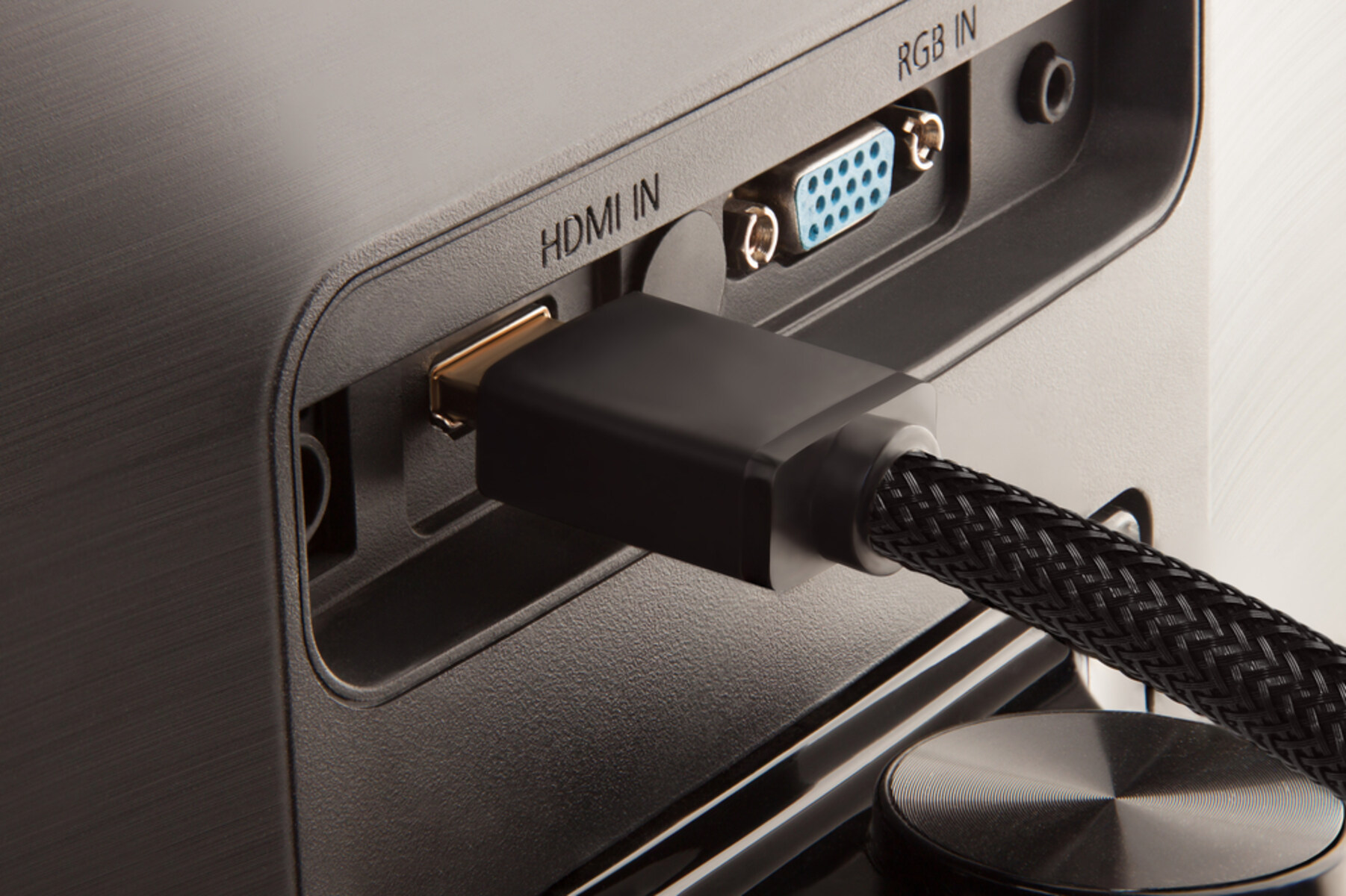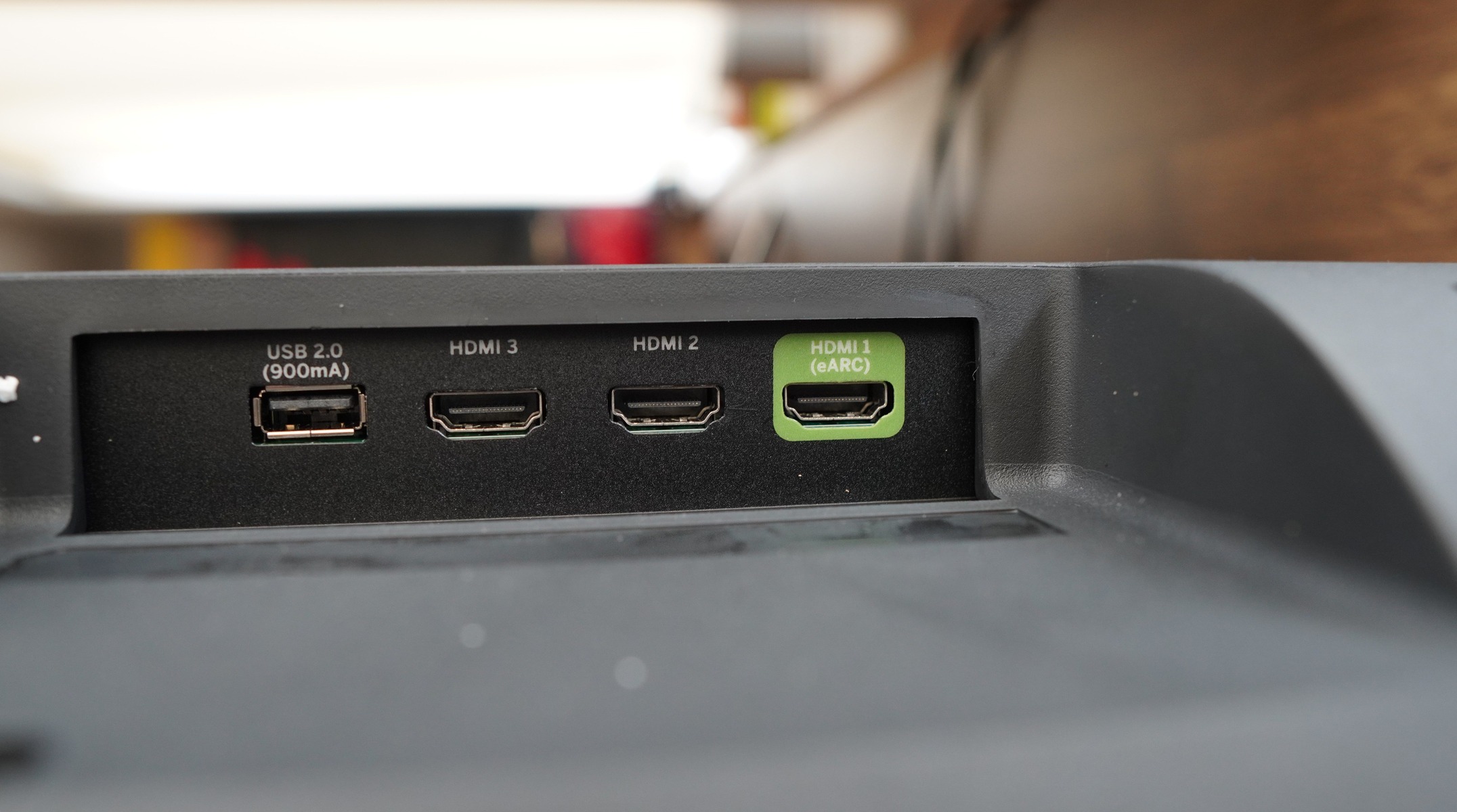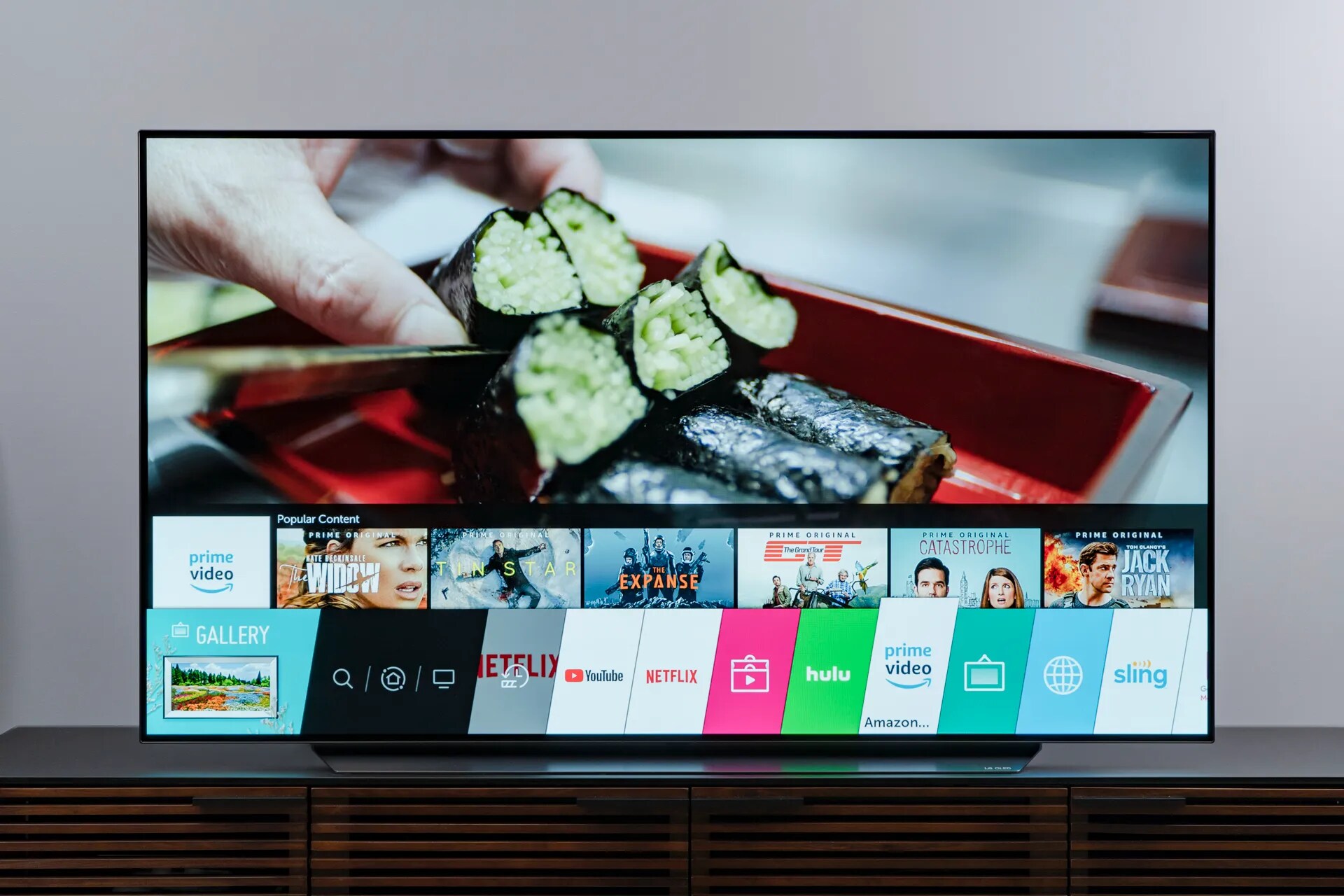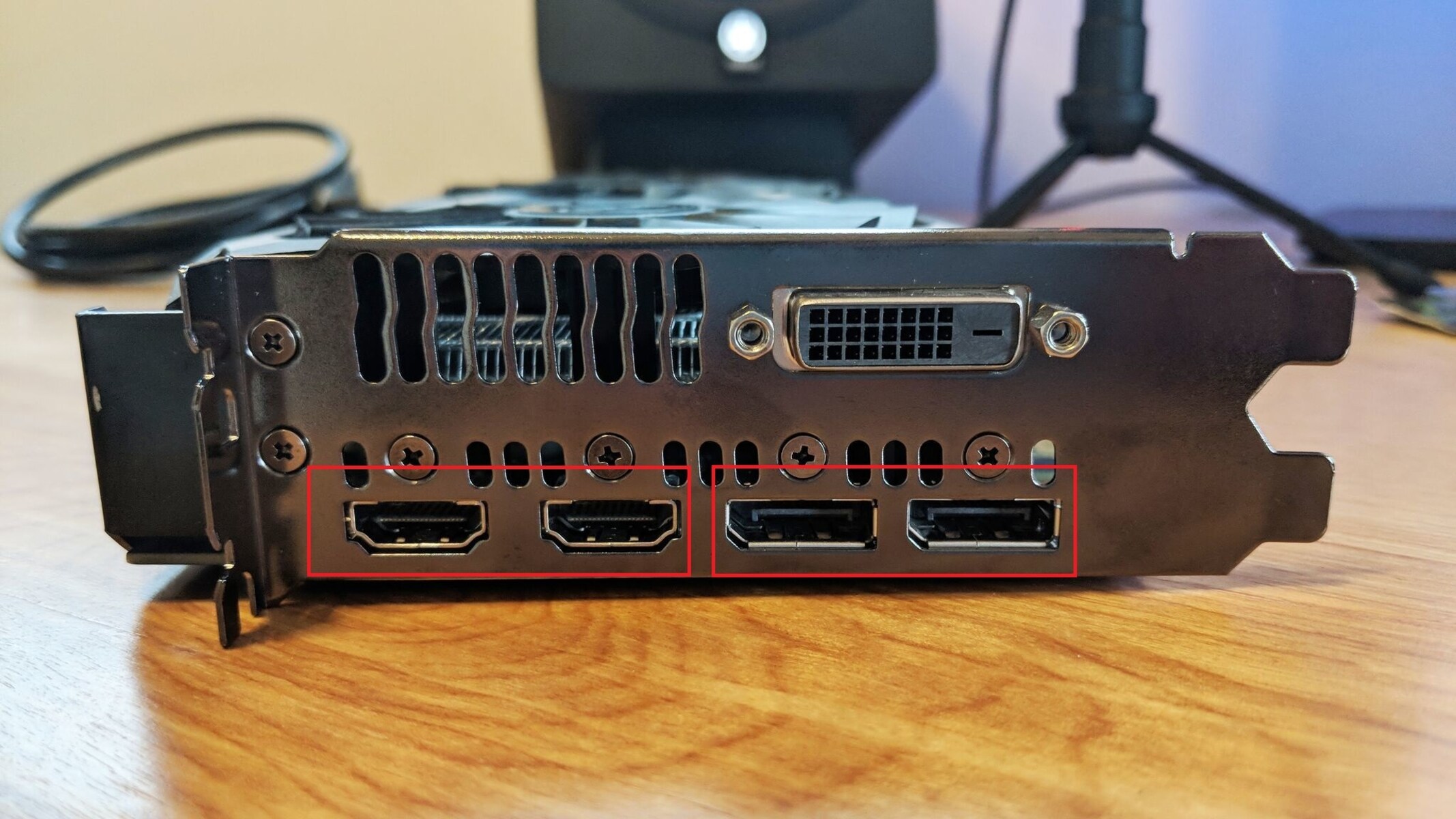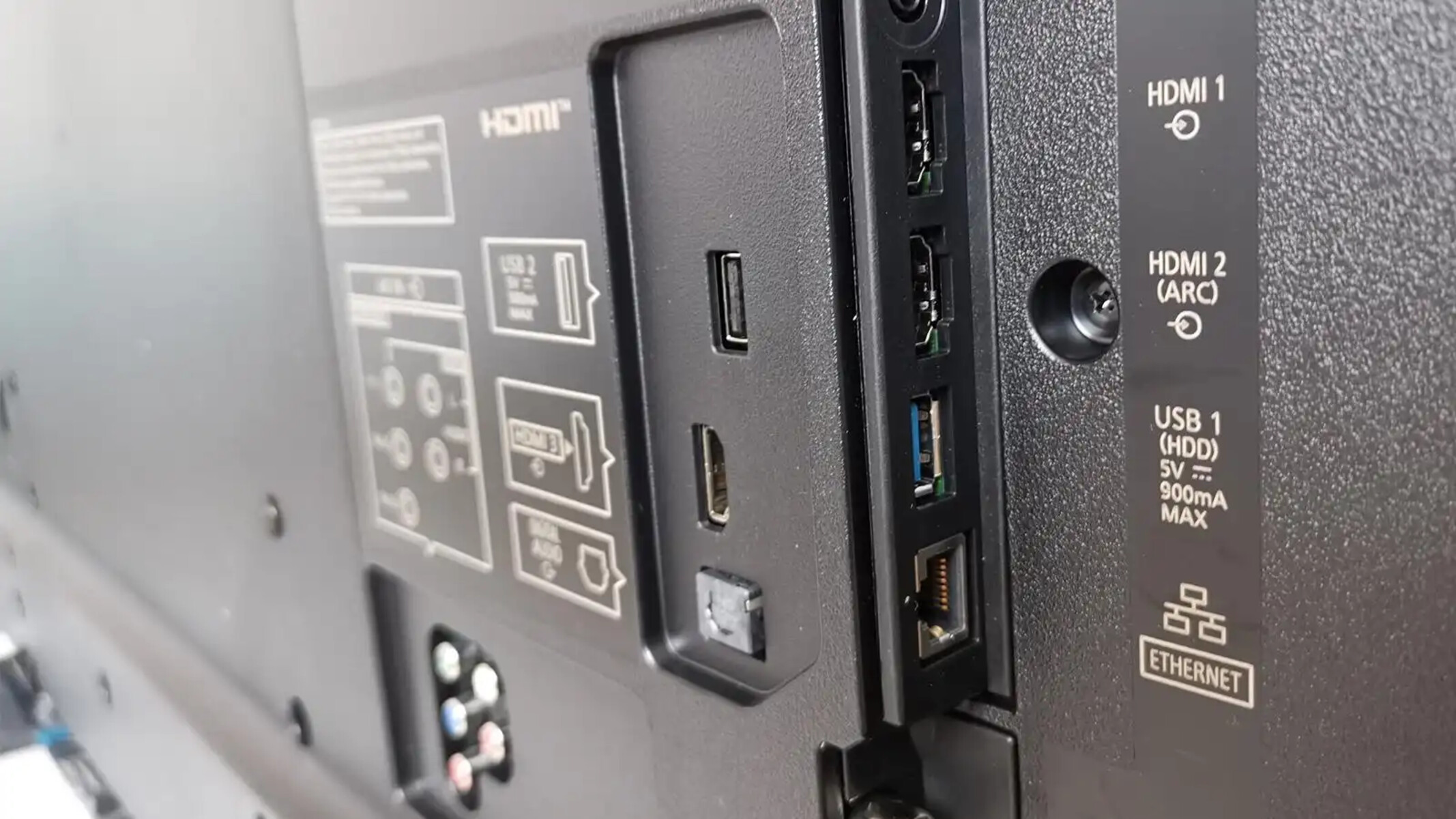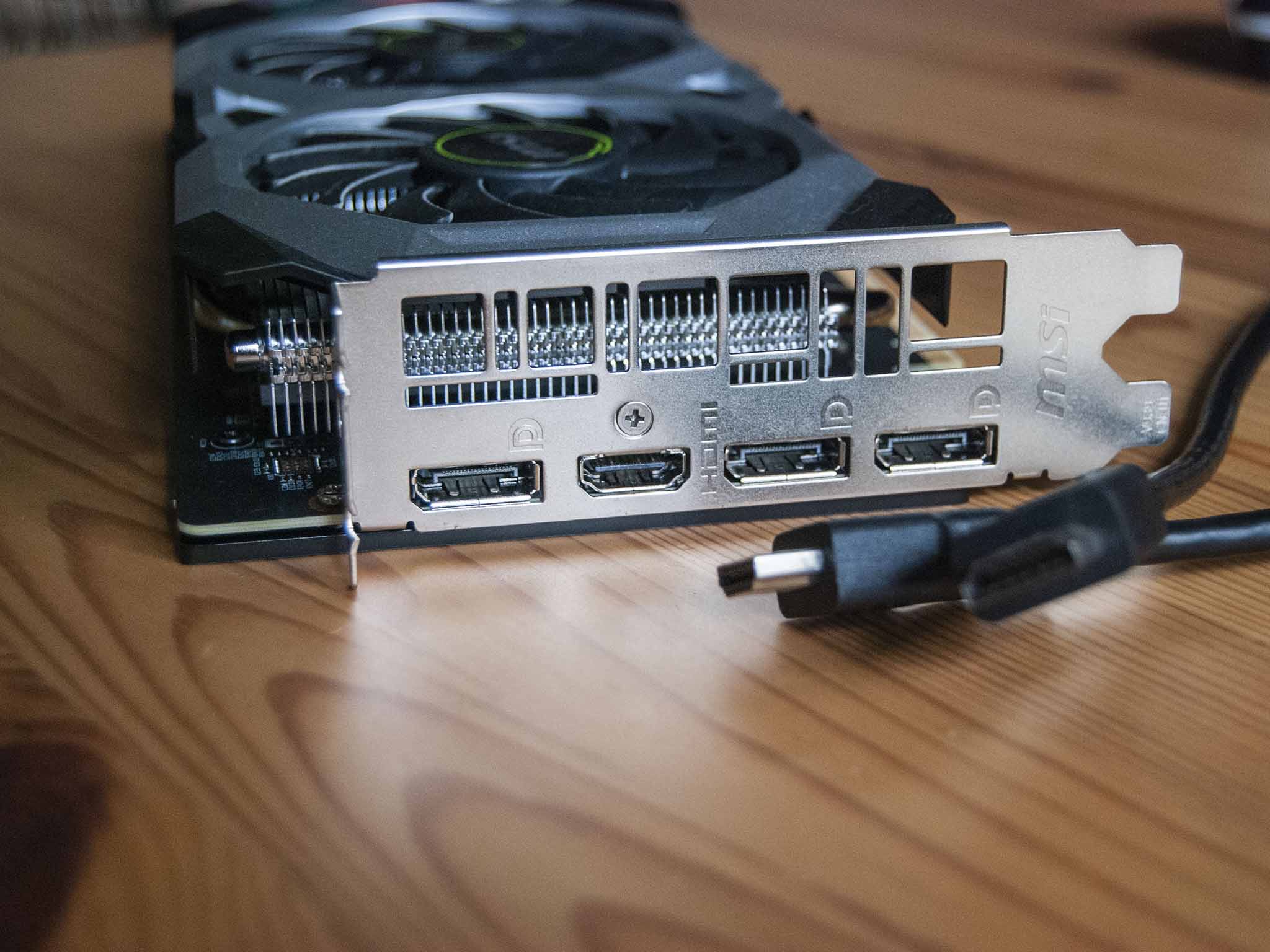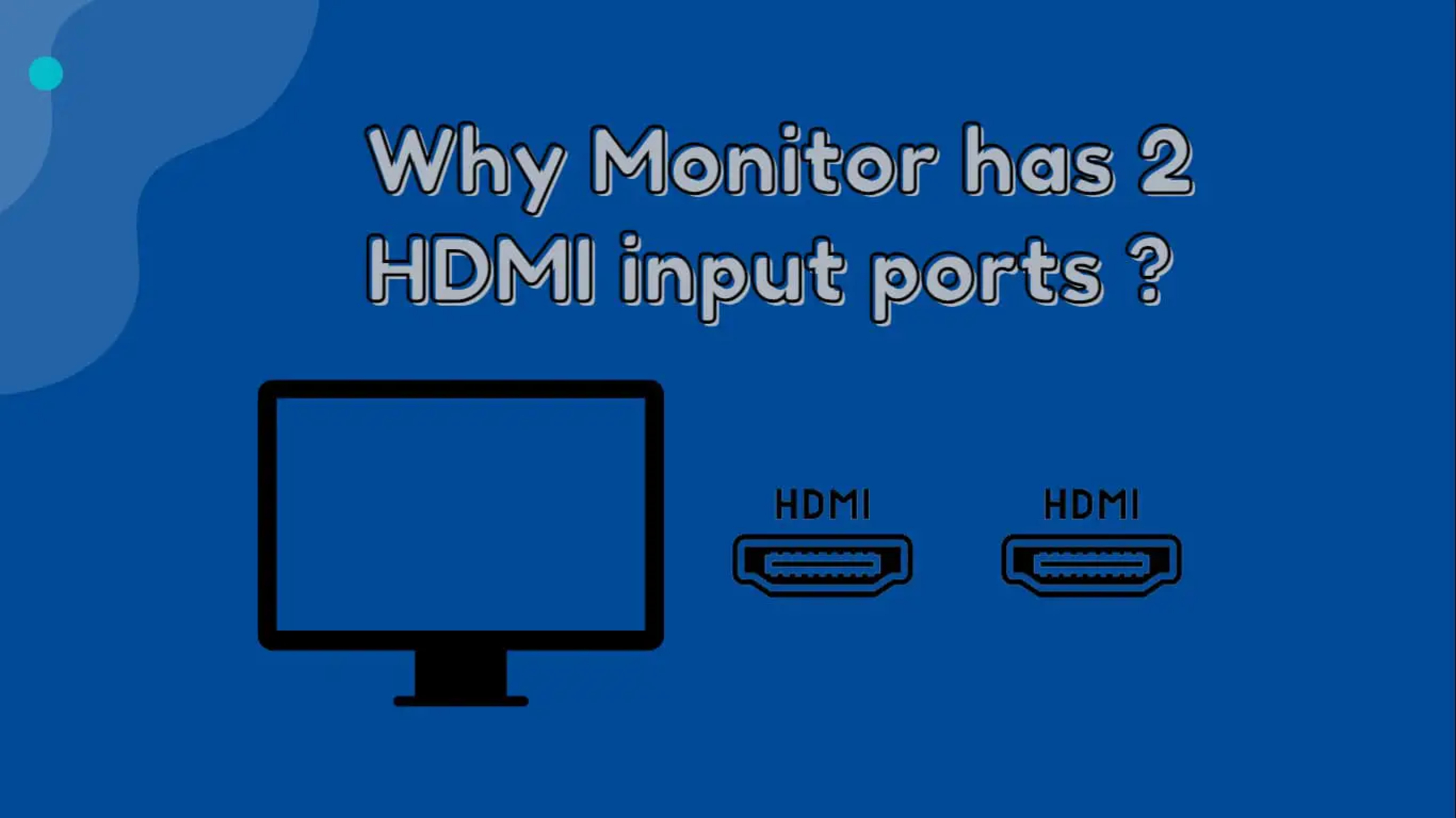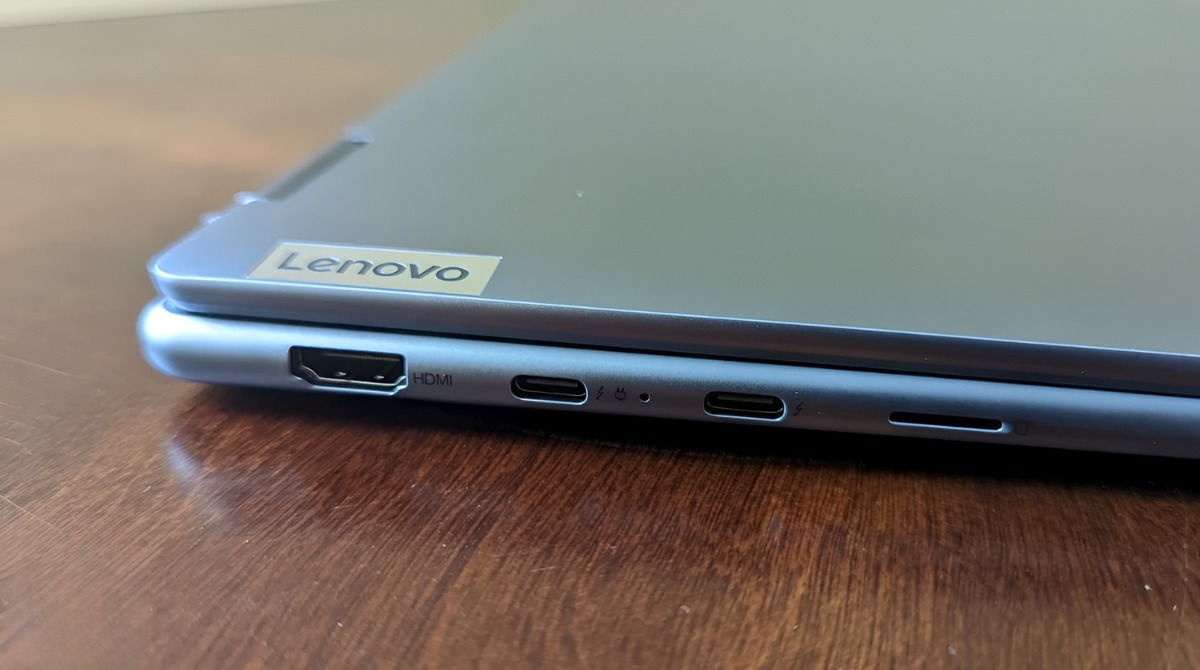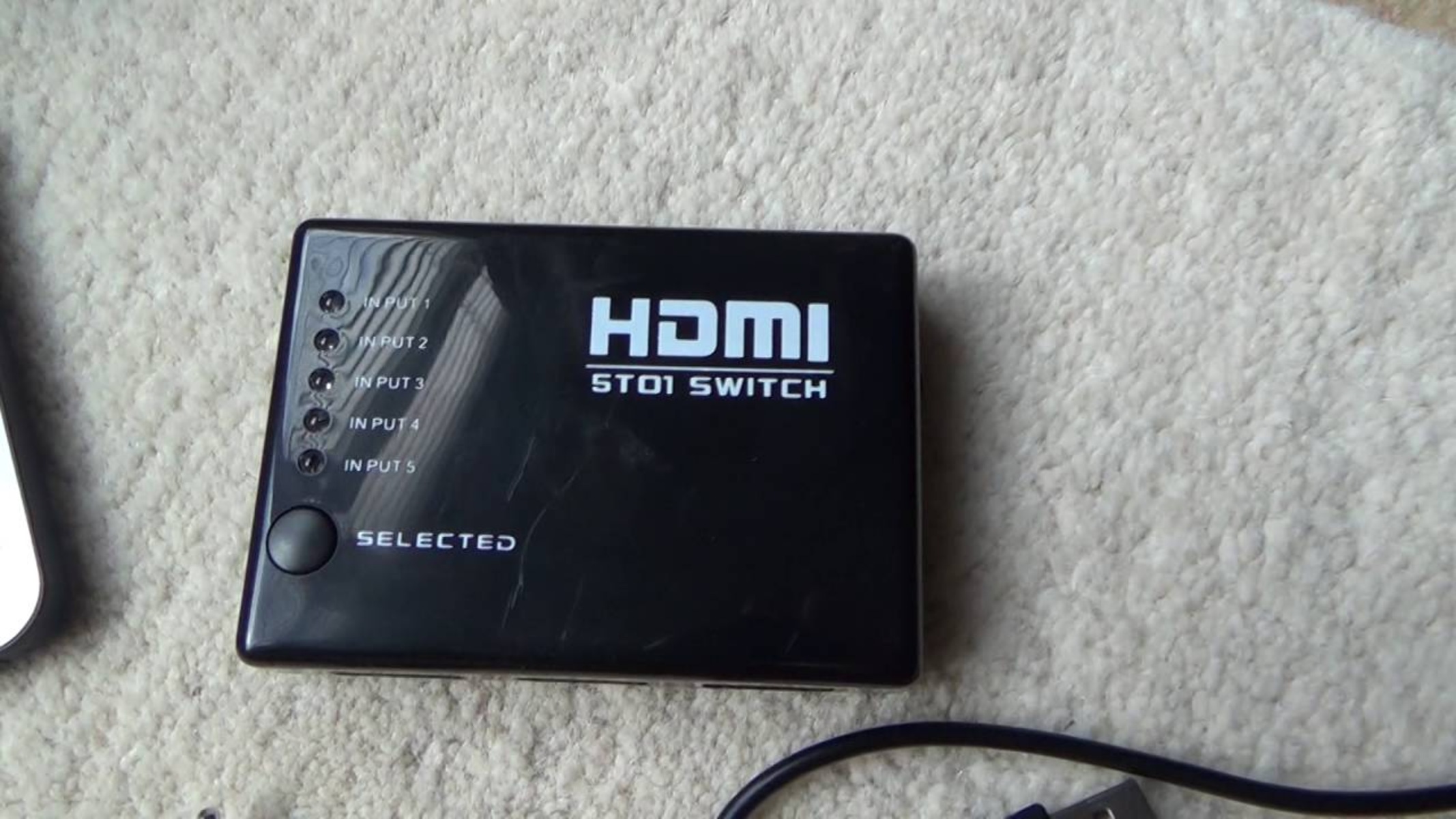Introduction
From streaming movies and playing video games to connecting your computer or laptop to a larger display, HDMI ports have become an essential component of our digital lives. The evolution of technology has made it easier for us to enjoy high-quality audio and video content, and HDMI ports play a crucial role in this process.
HDMI, which stands for High-Definition Multimedia Interface, is a digital connection standard that allows high-definition audio and video signals to be transmitted from one device to another. It has become the industry standard for connecting devices such as televisions, monitors, projectors, gaming consoles, and Blu-ray players. The widespread adoption of HDMI ports has revolutionized the way we consume and experience media in our homes and offices.
The popularity of HDMI ports is primarily due to their ability to transmit both audio and video signals in high-definition without any loss of quality. Unlike their analog counterparts, HDMI ports provide a digital connection that delivers crisp and clear audiovisual output. This makes them ideal for home theaters, gaming setups, and professional environments that require a high-quality display.
In addition, HDMI ports offer several benefits over other connection options. They provide a single cable solution for transmitting both audio and video signals, eliminating the need for multiple cables and reducing clutter. HDMI technology also supports various audio formats, including Dolby TrueHD and DTS-HD Master Audio, which ensure an immersive audio experience.
Moreover, HDMI ports support High-bandwidth Digital Content Protection (HDCP), which prevents unauthorized copying of copyrighted content. This feature is particularly important for streaming services and media players that require secure transmission of copyrighted material.
In the following sections, we will explore the different types of HDMI ports, how to identify them, their common uses, and compatibility considerations. Additionally, we will discuss troubleshooting tips for HDMI port issues. So, let’s dive in and unravel the world of HDMI ports and their significance in our digital lives.
What Is an HDMI Port?
An HDMI port, short for High-Definition Multimedia Interface, is a standardized digital connection that allows for the transmission of high-quality audio and video signals between devices. It has become the preferred method of connecting various devices such as televisions, monitors, gaming consoles, and even smartphones.
Unlike previous analog connections, such as VGA or RCA cables, HDMI ports utilize digital signals, resulting in superior audio and video quality. With an HDMI port, you can enjoy high-definition content without any loss of quality or degradation. This makes it perfect for watching movies, playing video games, or giving presentations.
One of the main advantages of HDMI ports is their ability to transmit both audio and video signals through a single cable. This eliminates the need for separate audio and video cables, reducing clutter and simplifying the setup process. It also ensures that the audio and video signals remain synchronized, providing a seamless and immersive viewing experience.
HDMI technology supports a range of resolutions, including standard definition (480p), high definition (720p, 1080p), and even ultra-high definition (4K and 8K). This flexibility allows you to connect devices with varying capabilities and resolutions and still get the best possible output.
Additionally, HDMI ports offer support for various audio formats, including stereo, Dolby Digital, DTS, and more. This enables you to enjoy immersive surround sound when connecting your devices to a home theater system or soundbar. With HDMI, you can experience movies, music, and games with outstanding audio fidelity.
Another notable feature of HDMI ports is their compatibility with High-bandwidth Digital Content Protection (HDCP). This technology ensures that copyrighted content is transmitted securely, preventing unauthorized copying and distribution. It is a crucial aspect for streaming services, Blu-ray players, and other devices that deal with protected content.
In summary, an HDMI port is a digital connection that allows the seamless transmission of audio and video signals between devices. Its ability to deliver high-definition content, support various audio formats, and provide a single cable solution has made it an indispensable component in our digital lives. Whether you’re enjoying a movie night at home or delivering a professional presentation, HDMI ports ensure that you get the best audiovisual experience possible.
Benefits of Using an HDMI Port
Using an HDMI port to connect your devices offers several advantages, making it the preferred choice for transmitting audio and video signals. Let’s explore some of the key benefits of using an HDMI port:
- High-Quality Audio and Video: HDMI ports ensure that you experience the highest quality audio and video output. By utilizing a digital connection, HDMI eliminates signal degradation and delivers a clear and crisp picture with vibrant colors. It also supports high-definition resolutions, allowing you to enjoy movies, games, and other content in stunning detail.
- Single Cable Solution: One of the primary advantages of HDMI is its ability to transmit both audio and video signals through a single cable. This eliminates the need for separate cables for audio and video, reducing clutter and simplifying cable management. With HDMI, you can connect your devices effortlessly and enjoy a seamless setup experience.
- Audio Options: HDMI technology supports various audio formats, including stereo, surround sound, and advanced codecs like Dolby Atmos and DTS:X. This ensures that you can enjoy immersive audio when connecting your devices to compatible audio systems. Whether you’re watching a movie, playing a game, or listening to music, HDMI provides an exceptional audio experience.
- Easy Compatibility: HDMI is widely supported by most devices, including televisions, monitors, projectors, gaming consoles, and more. This high level of compatibility allows you to connect different devices seamlessly, regardless of the brand or model. You can easily connect your laptop to a TV, or your gaming console to a monitor, without any hassle or compatibility issues.
- Secure Content Transmission: HDMI ports support High-bandwidth Digital Content Protection (HDCP), which ensures secure transmission of copyrighted content. This feature is particularly important when streaming movies or using media players that require protected content. HDCP prevents unauthorized copying or distribution of copyrighted material, protecting the rights of content creators.
In summary, using an HDMI port offers numerous benefits, including high-quality audio and video, a single cable solution, diverse audio options, easy compatibility, and secure content transmission. Whether you’re enjoying multimedia content, gaming, or giving presentations, HDMI maximizes your audiovisual experience and simplifies connectivity between devices. So, make sure to take advantage of HDMI ports for all your audio and video needs.
Different Types of HDMI Ports
HDMI ports come in different types, each with its own capabilities and features. Understanding these different types can help you identify the compatibility and functionality of the HDMI ports on your devices. Let’s take a closer look at the various types of HDMI ports:
- HDMI Type-A: This is the most common type of HDMI port and is typically found on televisions, monitors, and other display devices. It features 19 pins and supports standard, high-definition, and ultra-high-definition resolutions up to 4K and 8K. HDMI Type-A ports are backward compatible, meaning they can work with older HDMI versions.
- HDMI Type-B: HDMI Type-B ports are less common and are not commonly found on consumer devices. They were introduced to support wider color spaces and higher resolutions than Type-A ports. Type-B ports have 29 pins and are capable of transmitting a dual-link signal, allowing for even higher resolutions.
- HDMI Type-C (Mini HDMI): This smaller-sized HDMI port, known as Mini HDMI, is commonly found on camcorders, DSLR cameras, and other portable devices. It features 19 pins and supports the same resolutions as Type-A ports but in a more compact form factor. If your device has a Mini HDMI port, you can easily connect it to a TV or monitor with a HDMI Type-A cable.
- HDMI Type-D (Micro HDMI): The smallest type of HDMI port, known as Micro HDMI, is typically found on smartphones, tablets, and other compact devices. It has 19 pins like Type-A and Type-C ports but with a much smaller size. Micro HDMI ports allow you to connect your portable devices to larger displays or projectors for a better viewing experience.
- HDMI Type-E: HDMI Type-E is a rare and specialized type of port primarily used in automotive applications. It features 30 pins and is designed for high-speed data and video transmission in vehicles. Type-E ports are not commonly found on consumer devices and are specific to automotive entertainment systems.
It’s worth noting that Type-A, Type-C, and Type-D ports are the ones most commonly encountered in consumer electronics. However, with the increasing adoption of compact devices, such as smartphones and tablets, you may come across Type-C or Type-D ports more frequently. When connecting devices with different HDMI port types, you can use appropriate adapters or cables to ensure compatibility.
In summary, HDMI ports come in various types, including Type-A, Type-B, Type-C (Mini HDMI), Type-D (Micro HDMI), and Type-E. Identifying the type of HDMI port on your devices is essential for determining compatibility and ensuring a seamless connection. So, whether you’re connecting a TV, camera, or smartphone, make sure to check the type of HDMI port and use the appropriate cable or adapter for optimal performance.
How to Identify an HDMI Port
Identifying an HDMI port can be relatively simple, as they are typically labeled and easily recognizable on most devices. To help you identify whether a port is an HDMI port, consider the following factors:
- Look for the Label: Most devices with HDMI ports will have the word “HDMI” printed next to the port itself. The label may be located on the device’s rear panel, side, or even on the front, depending on the product. Look for the familiar logo or the text “HDMI” to ensure you’ve found the right port.
- Check the Shape and Size: HDMI ports have a distinctive rectangular shape with slightly rounded edges. They come in different sizes, with Type-A ports being the most common, followed by the smaller Type-C (Mini HDMI) and Type-D (Micro HDMI) versions. Pay attention to the port’s physical characteristics to determine if it matches the HDMI standard.
- Count the Number of Pins: HDMI ports have a specified number of pins that correspond to the specific type. For example, HDMI Type-A ports typically have 19 pins. If the port you are examining aligns with the pin count for a particular HDMI type, it is likely an HDMI port.
- Consult the User Manual: If you’re still unsure whether a port is an HDMI port, refer to the device’s user manual. The manual should provide detailed information about the available ports and their functionalities.
- Use Online Resources: Another helpful resource is the manufacturer’s website or online forums dedicated to the specific device you are using. These resources often provide visual diagrams or photographs of the device’s ports, helping you identify the HDMI port.
By considering these factors and using the available resources, you can easily identify an HDMI port on your devices. Remember to check for labels, pay attention to the port’s shape and size, count the number of pins, consult the user manual, and use online resources if needed. Properly identifying the HDMI port ensures that you make the correct connections and enjoy the benefits of high-quality audio and video transmission.
Common Uses of HDMI Ports
HDMI ports serve a wide range of purposes and are found in various devices. Their versatility and ability to transmit high-quality audio and video signals make them essential in numerous applications. Let’s explore some of the common uses of HDMI ports:
- Connecting TVs and Monitors: HDMI ports are commonly used to connect televisions and monitors to external devices. Whether it’s linking your cable box or streaming device to your TV or connecting your computer to a monitor, HDMI ports provide a seamless and reliable connection. This allows you to enjoy high-definition content with vibrant colors and crisp images on a larger screen.
- Gaming Consoles: Gaming enthusiasts appreciate HDMI ports for their ability to provide a superior gaming experience. HDMI connections enable the transmission of high-resolution graphics and surround sound, enhancing the immersion and realism of gaming. By connecting your gaming console to a TV or monitor through an HDMI port, you can enjoy the latest games with stunning visuals and immersive audio.
- Home Theater Systems: HDMI ports are integral to connecting audio and video components in a home theater system. Whether it’s connecting a Blu-ray player, AV receiver, or media player to a TV or projector, HDMI ensures a seamless transmission of high-definition content and supports advanced audio formats. This allows you to create a cinematic experience in the comfort of your own home.
- Streaming Devices: Devices such as media streamers and smart TVs often rely on HDMI ports for connecting to the internet and streaming platforms. With an HDMI connection, you can easily access popular streaming services like Netflix, Amazon Prime Video, and Hulu, providing a vast library of movies, TV shows, and other content at your fingertips.
- Presentations and Meetings: HDMI ports have become indispensable in professional settings for delivering presentations and conducting meetings. By connecting a laptop or computer to a projector or display using an HDMI cable, you can showcase your slides or documents with high-definition clarity. This ensures that your audience can view your visual content in detail and improves overall communication.
These are just a few examples of the common uses of HDMI ports. Whether it’s for connecting TVs, monitors, gaming consoles, home theater systems, streaming devices, or facilitating presentations, HDMI ports simplify the process of transmitting high-quality audio and video signals. With their widespread adoption and universal compatibility, HDMI ports have become the go-to standard for multimedia connectivity in various settings.
HDMI Cables and Connectors
HDMI cables and connectors play a crucial role in connecting devices through HDMI ports and ensuring the transmission of high-quality audio and video signals. Let’s explore the key aspects of HDMI cables and connectors:
- HDMI Cable Types: HDMI cables come in various types and versions, including Standard HDMI, High-Speed HDMI, and Premium High-Speed HDMI. Standard HDMI cables support resolutions up to 1080i and are ideal for connecting older devices. High-Speed HDMI cables support resolutions of up to 4K and are suitable for most modern devices. Premium High-Speed HDMI cables offer higher bandwidth, allowing for features like 8K and Dynamic HDR. Choosing the appropriate cable type depends on the device’s capabilities and the desired resolution.
- HDMI Connector Types: HDMI connectors have different shapes and sizes to accommodate various devices. The most common type is Type-A, which is the standard rectangular HDMI connector found on most devices like TVs and laptops. Type-C, also known as Mini HDMI, is a smaller connector primarily used with cameras and portable devices. Type-D, or Micro HDMI, is even smaller and is commonly used with smartphones and tablets. It’s important to ensure that the cable connector matches the port on both the sending and receiving devices for a proper connection.
- Cable Length: HDMI cables come in various lengths, ranging from a few feet to several meters. When choosing a cable length, consider the distance between the devices you are connecting. It’s generally recommended to use the shortest cable length necessary to minimize signal loss and maintain signal integrity. However, if you need a longer cable, make sure to select a high-quality cable that supports the desired resolution and ensures reliable signal transmission.
- Cable Quality: The quality of an HDMI cable can impact signal transmission. While all HDMI cables certified by the HDMI Licensing Administrator, Inc. are designed to meet certain standards, it’s essential to choose reputable brands or certified cables to ensure reliable performance. High-quality cables are built with better materials and construction techniques, reducing the risk of signal degradation and interference.
- Additional Features: Some HDMI cables may include additional features such as Ethernet connectivity or audio return channel (ARC) support. Ethernet-enabled HDMI cables allow you to share an internet connection between HDMI devices, eliminating the need for separate Ethernet cables. ARC-enabled HDMI cables enable two-way audio communication between the TV and connected audio devices, eliminating the need for a separate audio cable for audio output from the TV to external speakers or sound systems.
In summary, HDMI cables and connectors play a vital role in connecting devices through HDMI ports and ensuring the transmission of high-quality audio and video signals. Understanding cable types, connector types, cable length, and cable quality will help you make informed choices when selecting HDMI cables for your devices. By choosing the right HDMI cables and connectors, you can enjoy seamless connectivity and maximize the audiovisual experience provided by your HDMI-enabled devices.
HDMI Port Compatibility
When working with HDMI ports, it is essential to understand the concept of compatibility to ensure that your devices can connect and communicate effectively. HDMI port compatibility refers to the ability of different HDMI versions, cables, and devices to work together seamlessly. Let’s explore the various aspects of HDMI port compatibility:
- HDMI Version Compatibility: HDMI technology has evolved over the years, with new versions offering improved features, higher resolutions, and increased bandwidth. HDMI 1.4 is a common version that supports resolutions up to 4K and 3D content. HDMI 2.0 introduced support for 4K at higher refresh rates and increased bandwidth. The latest HDMI 2.1 version supports 8K resolutions, enhanced audio, and features like Variable Refresh Rate (VRR) and Auto Low Latency Mode (ALLM). While newer HDMI versions are backward compatible with older versions, it is important to check for compatibility between the source device and the display to ensure optimal performance.
- Cable Compatibility: HDMI cables are designed to support different HDMI versions and resolutions. It is important to use the appropriate cable for your specific requirements. For example, if you want to transmit a 4K signal, make sure to use a High-Speed HDMI cable that supports 4K resolution. Additionally, when using longer cable lengths, ensure that the cable is certified for the desired resolution to minimize signal degradation and maintain optimal performance.
- Device Compatibility: Not all HDMI-enabled devices support the same features or resolutions. It’s important to ensure compatibility between the source device, such as a gaming console or Blu-ray player, and the display device, such as a TV or monitor. Check the specifications of both devices to ensure they support the desired resolution and features. For example, if you want to enjoy 4K content, both the source device and display must support 4K resolution.
- Audio Compatibility: HDMI ports support various audio formats, including stereo, Dolby Digital, DTS, and more. However, both the source device and receiving device must support the desired audio format to ensure compatibility. For example, if you want to enjoy surround sound audio, both the source device and audio system must support the specific surround sound format, such as Dolby Atmos or DTS:X.
- HDCP Compatibility: High-bandwidth Digital Content Protection (HDCP) is an important aspect of HDMI port compatibility, especially when dealing with copyrighted content. HDCP ensures that the content transmitted between devices remains secure and protected. It is important to check if the devices you are connecting support the same HDCP version to ensure compatibility and avoid any content playback issues.
Understanding HDMI port compatibility is crucial for ensuring seamless connections and optimal performance between devices. Consider the HDMI version, cable compatibility, device compatibility, audio compatibility, and HDCP compatibility to ensure a successful and compatible HDMI setup. By ensuring compatibility, you can enjoy the full benefits of HDMI technology and unlock the enhanced audiovisual experiences it offers.
Troubleshooting HDMI Port Issues
While HDMI ports offer a convenient solution for audio and video transmission, occasional issues may arise. Troubleshooting HDMI port issues can help overcome common problems and ensure a seamless user experience. Here are some troubleshooting steps to follow if you encounter HDMI port issues:
- Check Cable Connections: Ensure that the HDMI cable is securely connected to both the sending and receiving devices. Sometimes, a loose connection can disrupt the signal transmission or result in no signal at all.
- Try a Different HDMI Cable: Faulty or damaged HDMI cables can cause issues, such as audio or video dropouts. Try using a different HDMI cable to determine if the problem lies with the cable itself.
- Ensure HDMI Port Compatibility: Verify that the HDMI ports on both devices are compatible with each other. For example, check if the HDMI version and resolution supported by your source device are also supported by the receiving device.
- Restart Devices: Power cycling the devices can often resolve temporary glitches. Turn off both the source device and the receiving device, unplug them from the power source, wait for a few seconds, and then plug them back in. Power them on and check if the HDMI signal is restored.
- Check for Signal Source Selection: Ensure that the receiving device is set to the correct HDMI input/source. Sometimes, the device may be set to a different input, resulting in no signal being detected from the HDMI port.
- Update Firmware: Check for firmware updates for both the source device and the receiving device. Manufacturers often release firmware updates to address compatibility issues and improve functionality. Update the firmware if available and see if it resolves the HDMI port issue.
- Reset Display Settings: If you are using a television or monitor as the receiving device, try resetting the display settings to default. Refer to the manufacturer’s manual for instructions on how to reset the display settings. This can help clear any settings conflicts that might be affecting the HDMI port.
- Try a Different HDMI Port: If you have multiple HDMI ports on your receiving device, try connecting the HDMI cable to a different port. Sometimes, a specific HDMI port might have issues while others work fine.
- Test with Another Display Device: If possible, try connecting the source device to a different display device using the same HDMI cable. This can help identify if the issue lies with the source device or the original display device.
- Consult Technical Support: If none of the above steps resolve the HDMI port issue, contacting the manufacturer’s technical support or seeking professional assistance may be necessary. They can provide further guidance based on the specific details of your devices and troubleshooting attempts.
By following these troubleshooting steps, you can overcome common HDMI port issues and restore the audio and video signal transmission. Remember to check cable connections, try different HDMI cables, ensure compatibility, restart devices, check signal source selection, update firmware, reset display settings if applicable, try different HDMI ports, and consult technical support if needed. Troubleshooting HDMI port issues helps ensure a smooth and uninterrupted audiovisual experience with your HDMI-enabled devices.
Conclusion
HDMI ports have become an integral part of our digital lives, offering a seamless solution for transmitting high-quality audio and video signals between devices. Throughout this article, we have explored various aspects of HDMI ports, including their definition, benefits, different types, identification methods, common uses, cable and connector options, compatibility considerations, and troubleshooting tips.
By utilizing an HDMI port, you can enjoy high-definition content, seamless audio and video transmission, and a simplified setup process. HDMI ports provide a single cable solution, eliminating clutter and reducing the number of cables required to connect various devices. They support a wide range of resolutions and audio formats, ensuring a superior audiovisual experience. HDMI ports are versatile and widely compatible, making them suitable for connecting TVs, monitors, gaming consoles, home theater systems, streaming devices, and more.
It’s important to pay attention to HDMI port compatibility, ensuring that devices, cables, and connectors are compatible with each other. By following troubleshooting steps, you can overcome common HDMI port issues that could arise, such as signal loss, cable problems, or incorrect settings. Troubleshooting helps ensure the smooth functioning of HDMI ports and the uninterrupted transmission of audio and video signals.
In conclusion, HDMI ports have revolutionized the way we connect and enjoy audiovisual content. They provide high-quality and reliable connectivity options for a wide range of devices, empowering us to create immersive home entertainment systems, gaming setups, and professional presentations. Understanding the features, benefits, and compatibility of HDMI ports allows us to make informed decisions when setting up and troubleshooting HDMI connections.
As technology continues to advance, HDMI ports will likely evolve to support even higher resolutions, enhanced audio capabilities, and new features. It’s important to stay updated on the latest HDMI standards and ensure that your devices and cables align with these advancements to maximize your audiovisual experience. Whether you’re streaming your favorite movie, playing the latest video game, or delivering a professional presentation, HDMI ports are the key to unlocking the full potential of your digital content and taking your multimedia experience to new heights.







